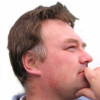The working time in milking farms in Wallonia
- Turlot, A. , Cardoso, C. , Wavreille, J. , Bauraind, C. , Bouquiaux, J.M. , Ledur, A. , Mayeres, P. , Froidmont, E. & Stilmant, D. (2011). The working time in milking farms in Wallonia. Poster in: 62nd Annual Meeting of the European Federation of Animal Science, Stavanger, Norway, 29 août - 2 septembre 2011.
| Type | Poster |
| Year | 2011 |
| Title | The working time in milking farms in Wallonia |
| Event name | 62nd Annual Meeting of the European Federation of Animal Science |
| Event location | Stavanger, Norway |
| Event date | 29 août - 2 septembre 2011 |
| Abstract | Today, the farm size continuously increasing in Wallonia (Belgium). The number of cattle or hectare per farm has increased respectively by 40% and 60% in 20 years. However, the number of worker in the farm does not change (1.5 per work unit) and now, more and more spouses have another employment. How to manage these structures? The project FuraLait performs an audit oh the working time in different types of farm '100% milk' (95% of dairy cows and no other crops than forages). The "Labour assessment' method (French method) was used to do a global approach of labour organization in fifty farms in Wallonia. The method investigated the time devoted to herd and land. Three types of works are distinguished: routine work, seasonal work (on herds and lands) and return work. Different parameters can influence the working time. A high level of automatisation (robot milking, automatic feeder, mixer operator...) can save 21min/100 liters of milk or 1,400 hours of work per year for a farm with a milk quota of 400,000 liters. On the other hand, a high level of feed autonomy increases the working time (57min/100 l vs 38min/100 l). The size of the milk quota also has an impact on working time. A farmer, with a milk quota ot 200,000 liters, spends 69min/100 l while another farmer, with a milk quota of 700,000 liters, devotes only 40min/100 l. |
| Fichier | |
| Authors | Turlot, A., Cardoso, C., Wavreille, J., Bauraind, C., Bouquiaux, J.M., Ledur, A., Mayeres, P., Froidmont, E., Stilmant, D. |



